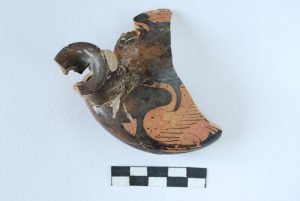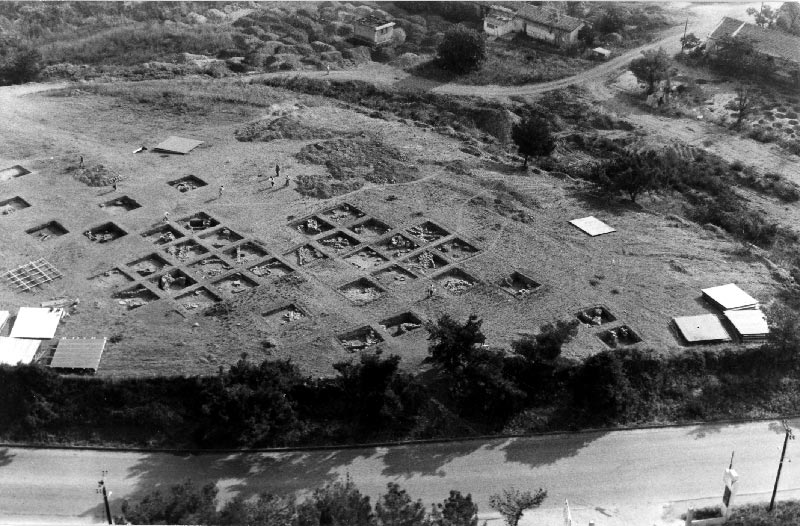The oldest fragments of Attic black-figure pottery found in the settlement are dating back to the first half of the 6th century, like the fragment of a cauldron with a Siren from the Sophilos’ workshop, the fragmentary olpe with a horse protome and some fragments from amphorai and column kraters with animals.
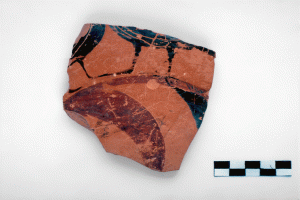
Most of the Attic vases belong, however, to the Late Archaic Period (end of 6th and early 5th c. BC). These are mostly cups, skyphoi, oinochoai, lekythoi and neck-amphorai from workshops that were frequently imported in Macedonia and the northern Aegean. In the cemetery there have been found also late black-figure column kraters and lekythoi with silhouette decoration.
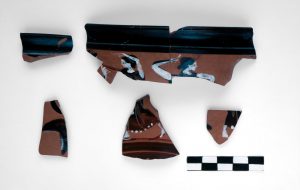
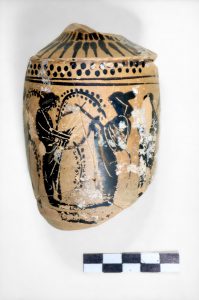
Numerous are the fragments of black-glaze vases dating from the 5th c. BC and most of them are of very good quality despite their fragmentary status of preservation. There are mainly open shapes such as skyphoi, various types of cups (mainly type C, Rheneia type, Bolsal type), one-handlers (kanastra), and bowls. Fewer are the closed shapes (oinochoai, pelikai, askoi, lekythoi) and other open household vessels (lekanides, plates, lamps).
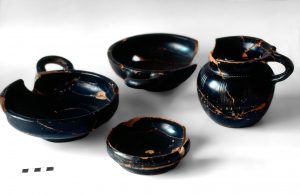
Occasional are the fragments of red-figure vases found in the settlement during the recent excavations, while more and better preserved vases (pelikai, skyphoi, bell kraters), dating to the second half of the 5th c. BC, have been found during the first excavation by Konstantinos Romaios, who excavated layers of the Classical period in a brief campaign in 1930. Other vase-shapes of the 5th c. (lekythoi, askoi, cup) and late red-figure vases of the 4th c. BC (pelikai, skyphoi) come from the cemetery as grave gifts.
